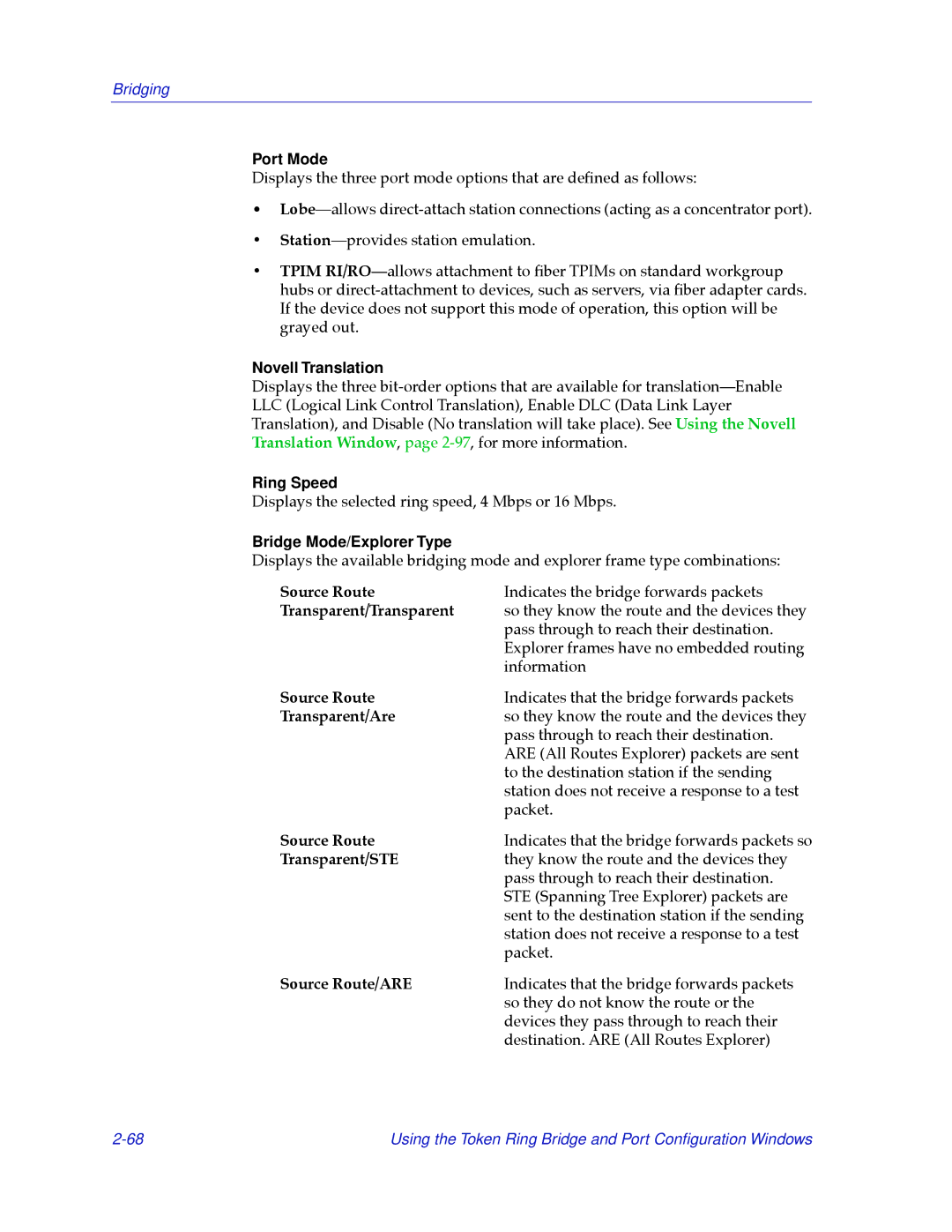Bridging
Port Mode
Displays the three port mode options that are deÞned as follows:
¥LobeÑallows
¥StationÑprovides station emulation.
¥TPIM RI/ROÑallows attachment to Þber TPIMs on standard workgroup hubs or
Novell Translation
Displays the three
Ring Speed
Displays the selected ring speed, 4 Mbps or 16 Mbps.
Bridge Mode/Explorer Type
Displays the available bridging mode and explorer frame type combinations:
Source Route | Indicates the bridge forwards packets |
Transparent/Transparent | so they know the route and the devices they |
| pass through to reach their destination. |
| Explorer frames have no embedded routing |
| information |
Source Route | Indicates that the bridge forwards packets |
Transparent/Are | so they know the route and the devices they |
| pass through to reach their destination. |
| ARE (All Routes Explorer) packets are sent |
| to the destination station if the sending |
| station does not receive a response to a test |
| packet. |
Source Route | Indicates that the bridge forwards packets so |
Transparent/STE | they know the route and the devices they |
| pass through to reach their destination. |
| STE (Spanning Tree Explorer) packets are |
| sent to the destination station if the sending |
| station does not receive a response to a test |
| packet. |
Source Route/ARE | Indicates that the bridge forwards packets |
| so they do not know the route or the |
| devices they pass through to reach their |
| destination. ARE (All Routes Explorer) |
Using the Token Ring Bridge and Port Configuration Windows |
